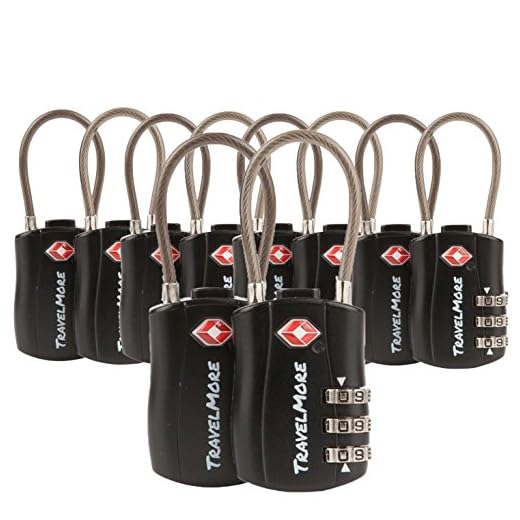



Begin with locating the zipper mechanism that secures the main compartment. A gentle tug on the zipper pull should reveal the main opening. If the zipper seems stuck, assess for any fabric snags or obstructions that may hinder movement.
Once the main closure is unfastened, consider checking interior pockets for additional storage. These sections often house smaller items such as electronics or toiletries, providing easy access during your trip. Always keep important items, like travel documents or personal identification, within reach to ensure seamless travel experiences.
For those utilizing locks, verify that the combination or key is at hand before attempting to gain entry. When using TSA-approved locks, the airport security personnel can easily assist in opening without damaging your belongings, allowing for a smooth transition through security checkpoints.
Maintain awareness of the surrounding space while accessing your bag. Cramped quarters can complicate retrieval efforts. If necessary, reposition your bag on a flat surface to create a stable area for unpacking or repacking your essentials.
Accessing Your Carry-On Bag
Begin with identifying the type of closure mechanism on your travel case. Most carriers use either a zipper or a combination lock. For zippers, ensure the sliders are aligned for smooth operation.
Steps for Zippered Bags
- Hold the bag steady with one hand.
- Gently pull the zipper tab, moving it from one end to the other.
- If the zipper resists, check for any fabric obstruction or snag.
Handling Combination Locks
- Locate the dial or latch.
- Input the correct numbers in the specified order.
- After entering the combination, pull or push the latch to release.
In cases where the lock is forgotten or malfunctioning, consider using a reset tool, often provided by the manufacturer, to regain access. Alternatively, seek assistance from airport security personnel for locked items.
Understanding Luggage Locks and Mechanisms
Familiarize yourself with various locking systems found on travel bags. Common designs include combination locks, key locks, and TSA-approved versions. Each system has unique features and methods for operation.
Combination Locks
Combination locks require a specific series of numbers to release. Ensure the dial is turned fully before starting the entry process. If forgotten, many models have reset mechanisms, usually detailed in the user manual.
Key Locks
Key locks use a physical key to secure the mechanism. Loss of the key means seeking professional aid or consulting the manufacturer’s resources for potential solutions. Always have a spare key accessible.
TSA-approved locks can be opened by security personnel without damage. If you encounter an issue with your lock at security, they may use their universal key to safely inspect your belongings.
When selecting a bag, consider the lock type for your travel needs. Always opt for durable materials and reputable brands to enhance security and reliability.
Common Mistakes When Accessing Cabin Luggage
Incorrectly positioning bags during security screening is a frequent error. Ensure that bags are easily identifiable and properly organized to expedite the process.
Neglecting to Identify Lock Types
Many travelers fail to recognize the different locking systems on their bags. Familiarize yourself with mechanisms such as combination locks or key locks prior to travel, as misunderstanding these can lead to frustrating delays.
Rushing the Process
Hurrying to retrieve belongings often results in overlooking items or incorrectly closing the compartments. Take your time to double-check that all necessary items are easily accessible, reducing the risk of leaving something behind. Consider using durable carriers, like the best durable umbrella stroller, for added convenience during transit.
Always ensure that compartments are completely secure before moving on. Randomly tugging on zippers without first checking their alignment can cause damage or malfunction. This is also true for bags with unusual designs requiring extra attention.
In chaotic environments, like airports, it’s tempting to overlook proper organization. Using smaller cases within your main bag can help keep essential items at hand.
A practical approach includes choosing items wisely. For example, using compact options such as the best small golf umbrella can save space and simplify the retrieval process.
Steps to Open Different Types of Luggage
Begin with determining the type of suitcase in your possession. Most commonly found varieties include hard-shell and soft-sided bags, each requiring distinct approaches for access.
Hard-Shell Suitcases
For rigid cases, locate the zippers or latches. If equipped with a combination lock, input the correct code. If that fails, check manufacturer instructions for override options. In some instances, a handle mechanism may need to be retracted for the case to fully open.
Soft-Sided Bags
Soft-sided varieties typically feature zippers. Ensure all zippers are free from obstructions. If the zipper is stuck, gently tug at the fabric surrounding it. Inspect the integrity of the zipper for damage that might hinder functionality. In cases with a buckle or clasp, release any securing mechanisms to access your belongings.
Tips for Securing Your Possessions After Accessing
Immediately arrange your belongings carefully after gaining access. Use packing cubes or organizers to keep items categorized, reducing the likelihood of misplacing them later.
Utilize Compression Straps
Employ compression straps to tighten the contents, preventing movement during transit. This method not only optimizes space but also secures items from shifting or getting damaged.
Locking Mechanisms
For additional protection, engage any locking features present. Always check that locks are functioning correctly before closing everything up again. If the luggage lacks built-in locks, consider using portable TSA-approved locks.
Remain vigilant in ensuring belongings are not left unattended or exposed. For further insights into securing your items, refer to this source.







